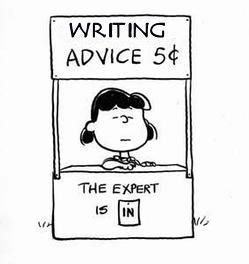Rachel Neumeier's Blog, page 305
April 18, 2016
This is so true
I saw this on Twitter and I must share it with you:


Almost completely useless math tricks
So, I was explaining the special trick that lets you multiply by 11 to a brilliant math tutor of ours who hadn’t happened to encounter it before. It only works for some numbers, I pointed out, but it’s very quick for those. And, I added, there was probably a trick to get it to work for any number but I’d never actually tried to figure that out.
Of course the math tutor wandered back an hour later and showed me the REAL trick to multiplying by 11. So for no reason at all I will share this with you all, even though I know the need to multiply big numbers by 11 seldom arises for most of us.
1. Multiplying two-digit numbers by 11.
This trick can be illustrated thus: 11 x 72. Take the 7 and the 2 and spread them apart so there is space between them: 7 …. 2. Now add them together and drop that number in the middle. Voila, the answer is 792. This makes it practically as easy to multiply by 11 as 10.
Of course this only works if the two numbers sum to a one-digit number, but, as I showed the tutor, if you overshoot, you can carry the digit from the tens place. This is easier to illustrate than to explain, so: 11 x 84. Start by spreading out the 84: 8 …. 4. Add them. You get 12. Put the 2 in the middle and carry the 1 by adding it to the 8. The answer is 924.
It turns out there is a fairly simple pattern that will let you expand this trick to much bigger numbers.
2. Multiplying big numbers by 11.
This is easy to demonstrate with a pencil and paper, but may be tricky to type. But I’ll try.
11 x 6789. Spread out all the digits: 6 …. 7 ….8 …. 9.
Add each pair of numbers: 6 ..(13).. 7 ..(15).. 8 ..(17).. 9
We will work from back to front. Bring down the 9 in the back. Bring down the 7 from the 17. Add the 1 from the 17 to the 15 to get 16. Bring down the 6 from the 16 and add the one to the 13 to get 14. Bring down the 4 and add the one to the 6 from the front of the original number to get 7. Bring the 7 down and put it in the front of your answer.
This is your answer 11 x 6789 = 74,679
I personally can’t visualize the numbers well enough to actually do the big ones in my head, at least not very fast. I need a bit of paper and a pencil to do this quickly and easily. But, even in these days when every phone is also a calculator, it is still cool. If you have math-geeky kids, maybe they’ll enjoy this. It’s certainly a far cry from showing them that 3 x 11 = 33.

Tony Hillerman
Here’s a good post at Black Gate about Tony Hillerman’s mystery-writing career.
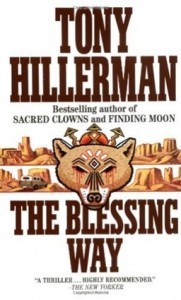
I read this whole series when I actually had access to a library and was working my way through it. I didn’t read them in order of publication — they weren’t shelved in order, as I recall, and I just went down the shelf. I don’t mind jumping back and forth in a long mystery series, usually, and I think these can be read in any order, probably.
As always with mysteries, I read ’em for character and setting, both of which are really well done. I felt at the time that Hillerman had to be getting the Navajo pretty much right — his characters and setting *felt* right to me. Now I can see why, considering Hillerman’s background.
The most amazing detail: Hillerman apparently found that outlining didn’t work for him. He wrote mysteries without outlines. Honestly, of all genres in the world, I would have thought that mysteries required outlines. Huh. I guess you can write anything by the seat of your pants if you have to.

April 17, 2016
Poetry Sunday
Okay, students, compare and contrast the following poems and what they express about the authors’ views about death.
I never got such an assignment (that I remember). I just think it’s interesting how Tennyson’s poem looks ahead, a clarion call: forward! While Rossetti’s is focused behind, on the bereaved.
+++++++++++++++++++++++++++++++++++++++++++++++++++++++++++++++++++++++++++++++++++++++++++++++++
Crossing the Bar
Sunset and evening star,
And one clear call for me!
And may there be no moaning of the bar,
When I put out to sea,
But such a tide as moving seems asleep,
Too full for sound and foam,
When that which drew from out the boundless deep
Turns again home.
Twilight and evening bell,
And after that the dark!
And may there be no sadness of farewell,
When I embark;
For tho’ from out our bourne of Time and Place
The flood may bear me far,
I hope to see my Pilot face to face
When I have crost the bar.
— Tennyson

+++++++++++++++++++++++++++++++++++++++++++++++++++++++++++++++++++++++++++++++++++++++++++++++++
Remember
Remember me when I am gone away,
Gone far away into the silent land;
When you can no more hold me by the hand,
Nor I half turn to go yet turning stay.
Remember me when no more day by day
You tell me of our future that you plann’d:
Only remember me; you understand
It will be late to counsel then or pray.
Yet if you should forget me for a while
And afterwards remember, do not grieve:
For if the darkness and corruption leave
A vestige of the thoughts that once I had,
Better by far you should forget and smile
Than that you should remember and be sad.
— Christina Rossetti


April 15, 2016
When burnout threatens, write what you love
I like this post by Chuck Wendig at Terrible Minds. This pretty much rings true to me:
Burnout is a kind of creative constipation. You get tired of doing it. The work feels only like work. Clarity seems impossible. The stress outweighs the joy.
You’ll hit it. You might hit it early in your career trying to get published. You might hit it in the middle of your career after all the business baggage has been slung over your shoulders. If you’re me, you might bump up against it again and again with the standard peaks and valleys of the authorial life. I periodically run parallel to burnout like someone running alongside the ocean — if I turn my head just so I can see the shark fins, I can see the rippling lines of a threatening undertow, I can see the SURLY OCTOPUSES OF ENNUI THREATENING TO ENROBE ME IN THEIR TENTACLES AND DROWN ME IN THE BUBBLING DEPTHS OF MY OWN LASSITUDE. …
[At such moments] WWYL, or Write What You Love.
Here’s why: at the end of the day, you got into writing for the same reason I did. TO MAKE MOUNDS OF MONEY SO BIG THEY CAUSE A TECTONIC SHIFT AND THREATEN TO SET THE EARTH OFF ITS AXIS. Wait, no! No. Bad Chuck. Bad. Let’s rewind. You got into writing for the same reason I did: because you fucking love it, that’s why. I don’t necessarily truck with the idea that writers “need” to write, as if they’re a tribe of gibbering addicts, but I damn sure want to. It’s what I wanted to do when I was a kid. It’s what I wanted to do in college and while working dead-end jobs after college and it’s heckadang what I want to do now. But burnout makes you forget that. It knocks you off your center. Writing is work, yes. It’s a job. But it’s not a job like mucking horse stalls or doing data entry. Writing sometimes feels like digging ditches, but you have to remember: it’s you digging ditches in a magical fantasy land that you control.
I often more or less kind of like revising a manuscript, which is good because I sure seem to spend a lot of time doing that. On the other hand, sometimes I really hate it, but it still needs to get done.
I generally more or less enjoy writing, which is excellent, but sometimes I hate it and literally quit in the middle of a sentence if that’s where I make my daily minimum. The best example of this ever was when I typed the words, “Then, at that moment” and stopped because hey, 1500 words, I’m out of here. I’ve practically written entire manuscripts in that frame of mind. (No one seems able to guess which books I felt this way about. Even *I* wind up enjoying the book once it’s done, and can hardly remember feeling that way about it.)
But it is very reassuring, after coming out of something that you sort of liked working on, or that really did not enjoy working on, to hit a project that you can just fall into and the world disappears and you feel a physical jerk at any interruption and you try to work on your manuscript and eat breakfast at the same time and don’t even look at your TBR list and in fact you don’t even take a break for chocolate, not even really good chocolate.
As I say, that is very reassuring. Because it proves you still do want to be a writer, when you might have been entertaining the odd doubt in the back of your mind.
And that happens when you write what you love.
I’ve always thought the advice to write what you know was basically nonsense. In what sense do you “know” about dragons? Have *you* ever carried a terrible ring to Mount Doom? Never engaged on a quest to save the world, so I guess you can’t write about that?
Yeah, it’s a lot better to take the advice to write what you love. Yes, even if that’s a werewolf story, because sometimes writing what you love trumps even considerations of what you probably can or cannot sell. Not necessarily always. But sometimes.

April 14, 2016
The World is In a Fantasy Novel: cool mammal edition
Sometimes you run across a critter that really ought not exist in any reasonable world.
Sometimes those creatures have names that make it clear they’re really fantasy animals. The spotted quoll? I ask you. Can there really be an animal with that name? Of course not. Especially not one that looks like this:

It was seeing a picture of a baby spotted quoll on Twitter that made me think about animals that are plainly fantasy creations instead of real. There are actually quite a few, obviously. Here are a handful that strike me as particularly fantastical:
Cacomistle:

Who in the world names an animal a “cacomistle”? Especially an utterly adorable little fluffy thing with big eyes and that lovely tail. Don’t tell me these really exist. This is an animal your protagonist should encounter in an enchanted forest. They’re probably telepathic, though possibly not as friendly as they look. You may find out they have a hidden civilization in the canopy of the forest.
Here’s another, better known, I think. They tend to appear on all kinds of “strange animal” lists:

This is a gerenuk. I’ve always liked the name. Gerenuk. They belong in dream sequences where everything is elongated and delicate and moving in slow motion.

I’ve seen plenty of gerenuk. They breed easily in zoos. But even though I’ve seen them, I don’t really believe in them.
Now, we all must be familiar with this next one:
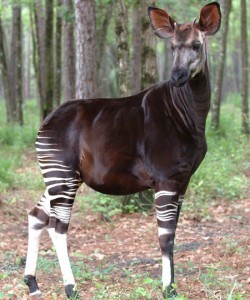
Even so . . . isn’t your reaction a kind of “Yeah, right,” incredulity? If not, let’s put this animal in motion and take another look:
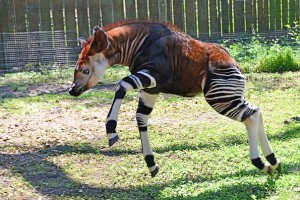
Give me a break! You know that is too cute and too awkward and just too peculiar to be real. Where would you actually find okapis? I’ll tell you: in a haunted jungle setting in a fantasy novel, that’s where. People probably ride them.
In that world, you’d probably also get eland centaurs, like this fabulous drawing from DeviantArt:
And sable antelope for war beasts — I know, those horns would get in the way if you tried to ride them. This warrior would get skewered the first time the animal tossed its head back. But sable antelope would look spectacular in front of a chariot, wouldn’t they?
And I’m sure only the nobility would get to ride okapis. I’m not the only one who thinks okapis would make fabulous riding animals, either.
I know eland and sable antelope and okapis are all from different ecosystems. Shut up. It’s my fantasy novel. The kingdom encompasses a wide region, okay?

April 13, 2016
Top ten books for people who enjoy ….
Here’s a nice post from Maureen at By Singing Light: Novels you might enjoy if you love poetry. I love this list! I must read everything on it.
Interestingly, the only one of these I actually have read is the McKillip — almost any one of hers would belong on this list. The Bell at Sealey Head. Ombria in Shadow. But it’s true Alphabet of Thorn is a particularly apt choice.
Many of the others on this list are on my TBR list — or my wishlist — or at least they’re on my *radar*. I particularly want to read The Girls at the Kingfisher Club.
Another title I think is perfect for those who love poetry: Sarah Addison Allen’s The Peach Keeper. Or any of her other titles.
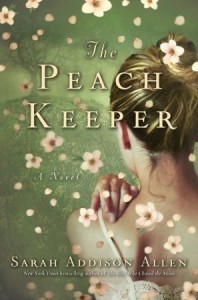
Meanwhile, Brandy at Random Musings is offering a Top Ten list for people who enjoy love stories. I see that she’s picking non-romances with great love stories.
I would never have thought of Willis’ Bellwether . I don’t remember the romance at all from that one. I guess I was focused on other aspects of the story? Now I’m curious and kind of want to re-read it.
Another one I think of under the category of great-love-story-not-a-romance: The Lions of Al-Rassan by Guy Gavriel Kay. Come to think of it, Kay is pretty much perfect for the prior category, too: readers who enjoy poetry should certainly try his work, especially (I would say) Under Heaven.
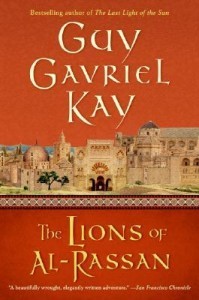
Related in theme, Chacic has a top ten list of romances — specifically, contemporary romances. I’m not likely to ever read all that many contemporary romances . . . proportionately, anyway . . . but I do find them useful because they’re easy to slip into without losing track of my own WIP and they’re easy to pick up and put down.
Well, except for Laura Florand’s romances. Chase Me nearly made me late to work.
The single contemporary romance I would honestly most like to try but haven’t yet gotten to is Truly by Ruthie Knox. Chachic recommended it — food is important, always a significant plus for me — the male lead is an ex-chef. Well, I do have it on my Kindle, so maybe I will read it soon.
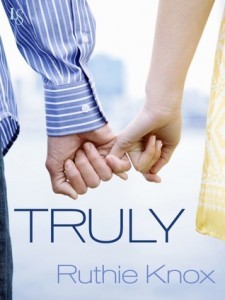
Here’s another subgenre I enjoy but dip into only occasionally: Katherine at I Wished I Lived in a Library offers a Top Ten list of cozy mysteries. Actually this subgenre kinda-sorta ties into the food-is-important theme, because there are times I think you can almost define “cozy mystery” as “a mystery with recipes in the back” — of course that’s not really true, but it is not uncommon and I always enjoy this when I see it.
Two of these suggested cozies meet that particular definition: the Read’em and Eat’em mystery series by Moran and the Orchard series by Connolly, which sounds like it’d be especially helpful when the apples start really rolling in this fall. I have to check those out.
Not exactly a cozy mystery, but Sarah Addison’s Allen The Girl Who Chased the Moon also offered many cake recipes at the back. I believe some of Patrice Greenwoods’s cozy-ish mysteries do, too. They certainly make you long for high tea.
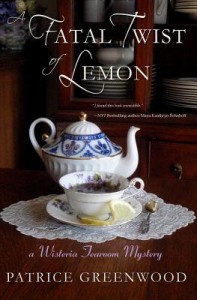
Here’s a list that’s not quite as specific as it seems at first glance: Rory at Forth Street Reviews suggests Ten Books for the Botany Lover. These include, among titles that are more centered on normal plants and normal botany, Annihilation by Jeff Vandermeer (!) which I admit I am not likely to ever try because it sounds too creepy for me; and The Martian (!!) — well, you have to admit, botany did happen in that one.
One book not included on this list, that really really should be, is Henry Mitchell’s on Gardening, a collection of his gardening columns, which are probably the wittiest and most charming gardening essays ever written by anybody. Honestly, I don’t think anybody else ever made me buy more plants.
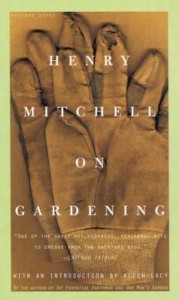

April 12, 2016
It’s getting hard to choose a favorite …
So, Laura Florand has what? About a dozen books out now? Plus various associated novellas. The Chocolate romances and the Rose romances and the Paris Nights romances . . . they do add up.
It used to be so easy for me to identify my favorite of the bunch.
The Chocolate Touch
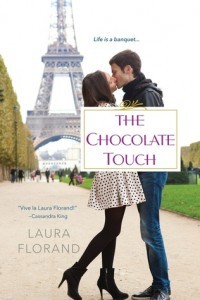
Dominique Richard’s reputation says it all—wild past, wilder flavors, black leather and smoldering heat. Jaime Corey is hardly the first woman to be drawn to all that dark, delicious danger. Sitting in Dom’s opulent chocolaterie in Paris day after day, she lets his decadent creations restore her weary body and spirit, understanding that the man himself is entirely beyond her grasp.
Until he touches her. . .
Chocolate, Dominique understands—from the biting tang of lime-caramel to the most complex infusions of jasmine, lemon-thyme, and cayenne. But this shy, freckled American who sits alone in his salon, quietly sampling his exquisite confections as if she can’t get enough of them—enough of him—is something else. She has secrets too, he can tell. Of course if she really knew him, she would run.
Dom’s my favorite male lead . . . I suppose, though it’s getting hard to pick out just one. And Jaime is a good match for him. This has always been my favorite of the Chocolate romances, though I’m pretty keen on the whole series.
Then Laura started writing the connected Rose series:
Once Upon a Rose
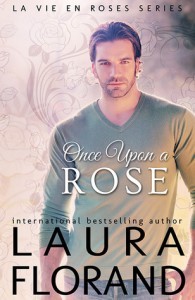
She stole his roses.
Fleeing the spotlight, burnt out rock star Layla—“Belle”—Dubois seeks refuge in the south of France. That old, half-forgotten heritage in a valley of roses seems like a good place to soothe a wounded heart. She certainly doesn’t expect the most dangerous threat to her heart to pounce on her as soon as she sets foot on the land.
He wants them back.
Matt didn’t mean to growl at her quite that loudly. But—his roses! She can’t have his roses. Even if she does have all those curls and green eyes and, and, and…what was he growling about again?
This was such a wonderfully warm and sweet romance, and the hints of Goldilocks around the edges adds a special layer of enjoyment to the story. Just thinking about this story makes me smile.
And now, just released, we have the newest Paris Nights romance:
Chase Me
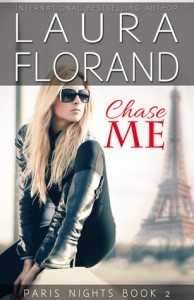
A Michelin two-star chef at twenty-eight, Violette Lenoir could handle anything, including a cocky burglar who broke into her restaurant in the middle of the night.
Or so she thought.
Elite counterterrorist operative Chase “Smith” had been through things that made Hell Week look easy. But nothing had prepared him for a leather-clad blonde who held him at bay at knifepoint and dared him to take her on.
Now if only saving the world didn’t require he ruin her life.
This story is such a delight. I have a serious soft spot for the right kind of cocky male lead, and they hardly come more cocky than Chase.
“You know I crush a hundred men just like you on a daily basis?”
Okay, not that he wanted to destroy her self-confidence or anything, but . . . seriously? “I’m pretty sure you don’t, honey. Just because they pretend to be me in video games doesn’t mean they’re actually like me.”
The dialogue is so superb. This is a delightful light story . . . with a darker edge to it, actually, but still. We aren’t supposed to ask when Vi found the time to learn to throw knives, or how she manages to practice enough to stay good, or why she even has throwing knives along with chef’s knives in the first place. We’re just supposed to enjoy the knives. And the motorcycle, and the leather, and the whole idea of a guy like Chase breaking into a kitchen and finding himself facing a woman like Vi. And the immediate sparks.
This is all complicated by the fact that Chase really has come pretty close to ruining Vi’s life, and acknowledges her right to be beyond furious about it even while he’d totally do it again. The tension between duty and personal life is perfect here. And Vi’s major issue is needing to find a way to trust Chase even when he can’t explain the full story — that’s perfect, too.
So which of Laura Florand’s stories is my favorite? I honestly have no idea. At this point, it’s getting pretty much impossible to choose.

April 11, 2016
Cartography
Here’s an interesting post by Brian Staveley at tor.com: Cartography and its Discontents.
This caught my eye for two reasons:
1) I really like maps! The single thing I dislike about the Kindle reading experience is that you can’t see the maps properly! It’s SO annoying. I have been known to go “look inside” on Amazon just so I can look at a map properly, since it’s impossible to look at on the Kindle.
I have always liked maps in fantasy novels. I study them before I read the book, I flip back to them when I’m uncertain about the geography that’s being described in the story, and at the end I go back to the map and study it some more.
It’s especially nice if the map makes some sort of geographic sense, though I’m not super picky about it. After all, I was a bio major, not a geology major. Stick a mountain range in the wrong spot and I may not notice; or if I do notice, I’m willing to believe that Magic Built Those Mountains. (In my books, sometimes Magic Did Build Those Mountains.)
I usually draw a map early in the writing process and refer to it as I figure out how long it takes somebody on a fast horse to get from Point A to Point B, or somebody with an ox-cart, or whatever. Every now and then I wind up drawing a map rather late in the writing process, as happened for MOUNTAIN — there, I didn’t draw one until my editor asked for one. But that’s uncommon.
But I also noticed this post because Brian Staveley says:
2) After all, stories—real and imagined—play out in a preexisting world. The world does not exist to serve the stories.
And I was all like, What could he possibly mean? I assure you that a fantasy world does INDEED exist to serve the story. Taking too long to get from Point A to Point B? If it needs to take that long, you can totally re-draw the map. It’s your map! If you suddenly need an inland sea, draw one! If the inland sea gets in the way, erase it! Good lord, it’s like saying you can’t change the first chapter so everything has to be forced to work with the first draft of that chapter. I mean, what?
Having said that, I guess I sort of see? Because Staveley then goes on: I like working within the formal constraints of my own map when I write my books. I like looking at the terrain, the opportunities and dangers it presents, and then imagining my characters looking at that same map, trying to imagine what they would do, how they would move through that world.
Which, okay, if “working within the formal constraints of your own map” floats your boat.
But I bet someday Staveley finds himself erasing an inland sea because it turns out to just be too inconvenient to have it there. And that will indeed work, because the world most certainly exists to serve the story.

Writing advice
Via a link from File 770, we have from Chrostopher Shultz at LitReactor, 22 of the Best Single Sentences on Writing
I disregard all writing advice on principal, more or less, which is to say I think all writing advice is wrong. Or it can be right, under very limited circumstances, for exactly the right person, which is the same thing as being mostly wrong.
On the other hand, I sometimes enjoy reading writing advice anyway. And 22 pithy sentences from 22 different authors is a particularly fun presentation.
I like a lot of these. When I’m working to a deadline, I appreciate Henry Miller’s advice: Work according to the program and not according to mood.
The truest statement, not really advice, comes from Joe Hill: Just about everything I learned about writing a good book I learned from reading lots and lots of good books.
My favorite is from GK Chesterton: I owe my success to having listened respectfully to the very best advice, and then going away and doing the exact opposite.
